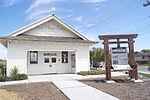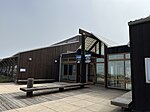The Monterey Bay Aquarium Research Institute (MBARI) is a private, non-profit oceanographic research center in Moss Landing, California. MBARI was founded in 1987 by David Packard, and is primarily funded by the David and Lucile Packard Foundation. Christopher Scholin serves as the institute's president and chief executive officer, managing a work force of approximately 220 scientists, engineers, and operations and administrative staff.
At MBARI, scientists and engineers work together to develop new tools and methods for studying the ocean. Long-term funding from the David and Lucile Packard Foundation allows the institute to take on studies that traditional granting institutions may be reluctant to sponsor. Part of David Packard's charge for MBARI was to "Take risks. Ask big questions. Don't be afraid to make mistakes; if you don't make mistakes, you're not reaching far enough."
MBARI's campus in Moss Landing is located near the center of Monterey Bay, at the head of the Monterey Canyon. Monterey Bay is one of the most biologically diverse bodies of waters in the world, and the underlying submarine canyon is one of the deepest underwater canyons along the continental United States. With this 4,000-meter-deep submarine canyon only a few ship-hours from their base of operations, institute scientists enjoy an advantageous proximity to this natural, deep-sea "laboratory."
MBARI is not open to the general public, but it has an open house once a year. Although MBARI is a sister institution to the Monterey Bay Aquarium, the two organizations have entirely separate management and funding.






